|
A Lab With A View
The view from the Laboratori Nazionali Di Frascati, Italy's High-Energy Laboratory, in the hills southeast of Rome, shows exciting world-class physics just ahead--Followed by a difficult challenge to define he laboratory's role in global physics research for the long-term future. Sound Familiar?
by Judy Jackson
A visitor from Fermilab feels very much at home just now at Italy's national particle physics lab in Frascati. True, the lab's hillside perch with its flat-topped Roman pines, the cucina italiana in the cafeteria and the ubiquitous ashtrays are tip-offs that we aren't in Illinois anymore. But consider the similarities: Frascati today is a laboratory with a heritage of brilliant accelerator physics and contributions to our understanding of the structure of matter. It has a newly upgraded accelerator, experiments that promise great new physics, and collaborators champing at the bit to get started on the next collider run. Its young and dynamic director is thinking hard about how to lead his laboratory into a healthy scientific future. It feels a lot like home at the laboratory on via Enrico Fermi.
The LNF (for Laboratori Nazionali di Frascati) was founded by the Istituto Nazionale di Fisica Nucleare, or INFN, in 1955. Highlights from Frascati's history include construction of the first electron-positron colliding-beam accelerator, a ring called ADA, after the favorite aunt of its creator, Bernard Touscek. ADA had a radius of less than a meter and reached an energy of only 250 MeV; but all modern storage rings, including CERN's LEP collider, trace their ancestry back to great-aunt ADA. The ADONE ring came next, with a record-setting energy of 1.5 GeV and a long run of successful nuclear physics experiments.
Following the success of ADONE, a significant accelerator upgrade, SuperADONE, received INFN approval, but when funding to build the project did not materialize, the laboratory's leadership recognized that Frascati needed a cheaper, better idea.
Una Fattoria di phi
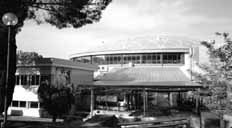
In jeans and polo shirt, Frascati Director Paolo Laurelli is very much a new-generation director of the nineties. And like his U.S. counterparts at Fermilab and SLAC, Laurelli finds himself at an exciting moment in his laboratory's history, with a new accelerator and important new physics just ahead, after a long struggle to reach that point.
"By the late 1980s," Laurelli said in a recent interview, "it had become clear that funding for INFN made it unlikely that Frascati would be able to build SuperADONE anytime soon. The situation was not healthy. But we knew it was important for the life of our laboratory to build a new machine, so we asked ourselves, what would be the best machine for us? At first, we thought about a B Factory, but as we thought about it further, we realized that, actually, a phi factory would be the right machine for us to build."
Particle factories come in different flavors. B factories, like those recently built at the KEK laboratory in Japan and at DOE's Stanford Linear Accelerator Center in the U.S., are colliders designed to produce copious amounts of B mesons. A phi factory, in contrast, is tuned to produce quantities of phi mesons, particles containing a strange and an anti-strange quark. Phi mesons decay in a very clean fashion to two types of kaons, K long and K short, that experimenters use to study CP violation, a form of matter-antimatter asymmetry, in kaons.
Frascati physicist (and CDF collaborator) Sergio Bertolucci expanded on the genesis of Frascati's new phi factory.
"Based on the square feet of the lab, and the square feet of our wallets, we concluded that a phi factory would be both feasible and have good physics potential."
Space constraints were important. Because of the innovative design of its domed roof, the building that housed ADONE had been declared an Italian national monument and could not be torn down. Any new accelerator would have to fit in the old building. A phi factory would fit the available space, fit the budget, and produce important physics results.
In June, 1990, INFN approved Frascati's phi factory, and engineering and construction of the DA NE accelerator began in the spring of 1991. The next task in putting Frascati back on the map was to form a physics collaboration to build a new detector to use DAN NE accelerator began in the spring of 1991. The next task in putting Frascati back on the map was to form a physics collaboration to build a new detector to use DAN E's particle beams. E's particle beams.
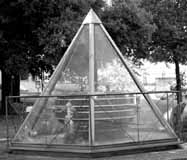
La Collaborazione
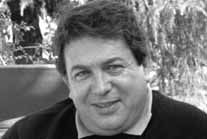
"In the beginning," Bertolucci said, "nobody knew where Frascati was. But under the leadership of Nicola Cabibbo and Enzo Iarocci at INFN, Italian physicists had done very well on experi-ments outside of Italy. We had a generation of young Italian physicists who had been trained, not in a provincial way, but in mainstream international particle physics. Laurelli, Paolo Giromini and Giorgio Bellettini had brought Italians first to CERN and then to Fermilab. This international experience was very important. They had learned that they could DO things. Now we wanted to bring them together for a new project at home."
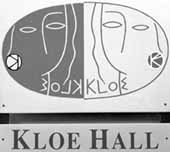 Under the leadership of Bertolucci and physicist Paolo Franzini of Columbia University, the KLOE collaboration came together from the four corners of the particle physics world.
Under the leadership of Bertolucci and physicist Paolo Franzini of Columbia University, the KLOE collaboration came together from the four corners of the particle physics world.
"Their different styles showed up in the collaboration," Bertolucci said. "My Žcowboys' from Fermilab were perceived just that way. The ŽGruppo SLAC' was a little Žcooler.'"
Bertolucci is determined to equip KLOE's young collaborators to contribute to global particle physics.
"All our meetings and colloquia are held in English," he said. "Our young people cannot grow up in the cradle of their language. They must be in the mainstream. We insist that they make presentations formally, as they are done in the States, rather than in the spontaneous style that applied when I was a student."
In any language, the physics from KLOE, scientists agree, will be well worth Frascati's effort.
"I am very eager to see what comes from KLOE," said physicist Bob Tschirhart, co-spokesman of Fermilab's KTeV experiment, which also studies CP violation in kaons. "KTeV and CERN's NA48 (another CP violation experiment) have recently reported on precision measurements that signal a new type of CP violation is present in nature. The KTeV and NA48 detectors measure the decay products of kaons in similar ways. But the KLOE experiment at DA NE produces kaons and detects their decay products in a completely different way, which will provide a vital independent measurement of this new form of CP violation. I am very eager to see what KLOE will tell us." NE produces kaons and detects their decay products in a completely different way, which will provide a vital independent measurement of this new form of CP violation. I am very eager to see what KLOE will tell us."
Tschirhart is not the only one. With the detector built and the accelerator completed, the KLOE experimenters are ready to roll. But, in a situation any Fermilab experimenter can understand, they have to wait a little longer.
Avanti!
DA NE, which saw its first particle collisions in March, 1998, was operating at close to design levels until the introduction of the KLOE detector disrupted the accelerator beam and luminosity plummeted, a problem the laboratory is working intensively to correct. Bertolucci is anxious to see the problem solved so that his restless "cowboys" can start taking data. Otherwise he frets that it may be hard to hold them together. NE, which saw its first particle collisions in March, 1998, was operating at close to design levels until the introduction of the KLOE detector disrupted the accelerator beam and luminosity plummeted, a problem the laboratory is working intensively to correct. Bertolucci is anxious to see the problem solved so that his restless "cowboys" can start taking data. Otherwise he frets that it may be hard to hold them together.
"Ph.D. students need data for their theses, and sometimes it is difficult not to think that the neighbor's garden is greener."
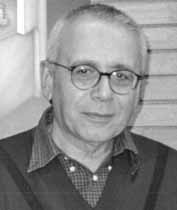 On a golden day at the end of October, Gaetano Vignola, DA
On a golden day at the end of October, Gaetano Vignola, DA NE project manager, is clearly a man under pressure. With his team, he is working virtually around the clock, wrestling with the problem of unacceptably high backgrounds showing up in KLOE as a result of the interaction between the detector's solenoid and the particle beam. NE project manager, is clearly a man under pressure. With his team, he is working virtually around the clock, wrestling with the problem of unacceptably high backgrounds showing up in KLOE as a result of the interaction between the detector's solenoid and the particle beam.
"I hope that in a matter of weeks we'll have this fixed," Vignola said.
Before returning to Frascati, Vignola spent eight years at Brookhaven National Laboratory. He says the experience in an American laboratory was useful.
"The ŽAmerican style' of no-nonsense accelerator building is a good complement to the Italian approach, which is perhaps more politically sophisticated," Vignola said. "At Frascati, a mixing of the two is clearly a necessity."
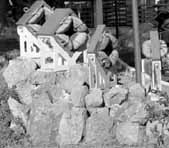
Il futuro
Like every particle physics laboratory on the planet, Frascati is thinking hard about the future.
"Building DA NE created a good group of accelerator physicists," Director Laurelli said. "We are engaged in two accelerator collaborations now, with DESY on TESLA, and with CERN on CLIC. Frascati is part of Run II at Fermilab, as well as the ATLAS collaboration on LHC, and is looking with interest at the proposed CERN neutrino experiment at Gran Sasso. We are also thinking about possible experiments in space." NE created a good group of accelerator physicists," Director Laurelli said. "We are engaged in two accelerator collaborations now, with DESY on TESLA, and with CERN on CLIC. Frascati is part of Run II at Fermilab, as well as the ATLAS collaboration on LHC, and is looking with interest at the proposed CERN neutrino experiment at Gran Sasso. We are also thinking about possible experiments in space."
In the longer range, Laurelli believes that the world has room for just one next linear collider. Deciding which one will involve two important aspects.
"First, which machine to build: the cheapest one, the one that gives most luminosity, and the one that is most expandable. Choosing the site is the next aspect. It will go to the first site to put up 60 percent of the funding. Wherever it is built, we have to make sure that each lab gets responsibility for a complete item for the new machine, and has the opportunity to put that piece into operation, to have ownership and visibility in a global project."
Bertolucci voiced similar thoughts.
"What's next for Frascati? Finally, after 2,000 years, in Europe we have learned that we have to team up, but teaming up is not so easy. We see ourselves in the future as one of a net of European labs. And the same kind of teamwork needs to happen worldwide, if we are going to make real progress. After all, since all the possible has been built, isn't it time to try the impossible?"
|

